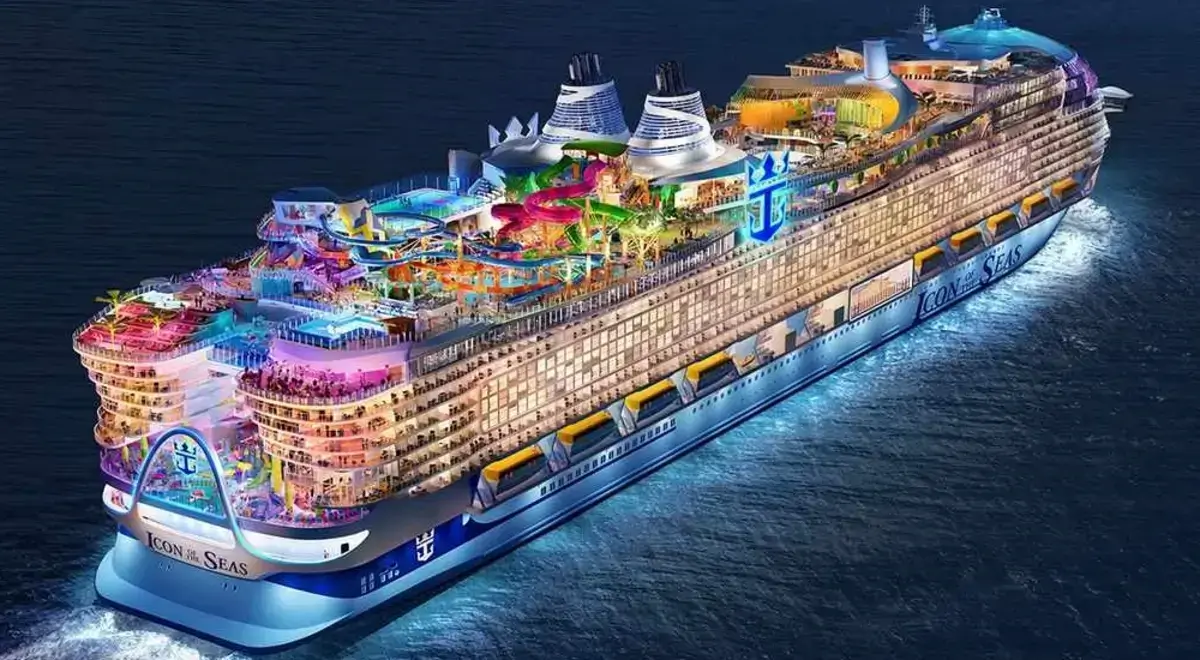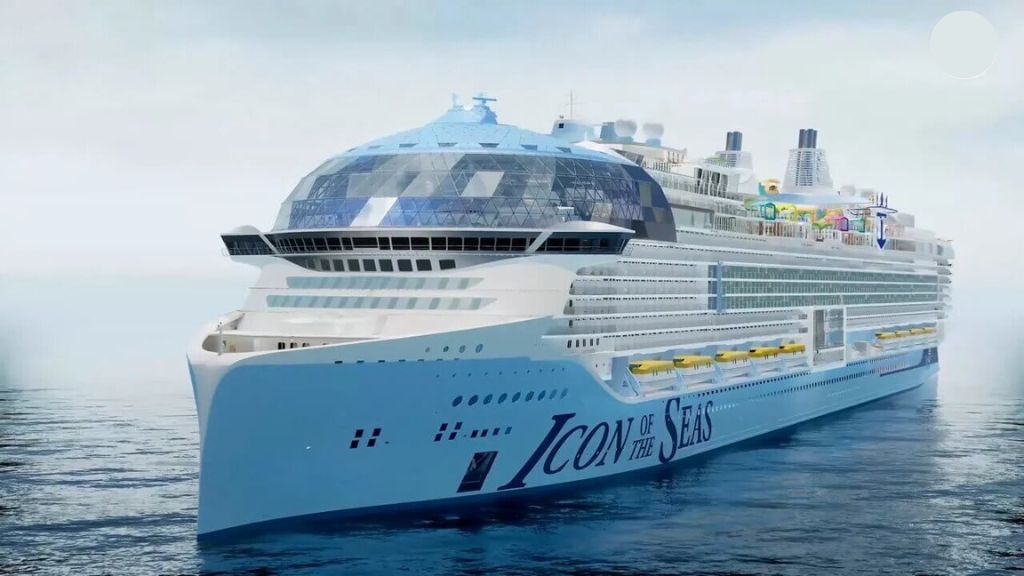World’s Largest Cruise Ship a Climate Concern

23 January 2024
Icon of the Seas a climate concern
Royal Caribbean’s “Icon of the Seas,” an engineering marvel that is billed as the largest cruise ship ever built sets out on its first official voyage on January 27. The luxurious amenities and eye-catching entertainment offer vacations that will never be forgotten, but environmentalists cry foul, labeling it a “climate liability.”
Largest Cruise Ship
The Icon, the largest cruise ship in the world, is 360 meters (more than 1,000 feet) long and weighs about 250,000 gross registered tons. 20 distinct decks, 40 eateries, lounges, and bars, seven pools, 6 waterslides, and a 55-foot waterfall are among its many features, concept offer unparalleled leisure experiences. But this opulence comes at a cost, measured in tons of carbon dioxide (CO2).

Bryan Comer, Director of the Marine Program at the International Council on Clean Transportation (ICCT), has done the math. In a 2022 report, he estimates that a typical passenger on the Icon, even on the most efficient cruise line, will generate about 1,100 pounds of CO2 per 1,200-mile cruise. That’s nearly double the footprint of a plane trip and hotel stay for the same distance.
The issue lies not just in the sheer size and energy consumption of the ship, but also in its fuel. While the International Maritime Organization (IMO) has set regulations for cleaner fuels for new ships, these standards fall short of what’s needed to curb the industry’s rapidly growing emissions. As a result, cruise lines like Royal Caribbean, while adopting some cleaner technologies, still rely heavily on heavy fuel oil, a notorious polluter.
The consequences are serious a recent report states that between 2019 and 2023, emissions from international shipping—which includes cruise ships—grew by 2.9%. The international attempts to tackle climate change could be jeopardized by this upward trend. The majority of this impact is felt by ocean ecosystems, which are especially susceptible to warming and acidification brought on by CO2. Coral bleaching is already occurring at an alarming rate, which is detrimental to marine biodiversity.
Also Read: US hits the Houthis and the Indian Navy recovers the crew after an attack
The Icon’s arrival serves as a stark reminder of the cruise industry’s crossroads. While it represents economic prosperity and technological advancement, its disregard for environmental consequences cannot be ignored.
The key is innovation Cruise lines need to advocate for tougher IMO regulations and make investments in greener fuels like hydrogen or renewable biofuels. In addition to choosing more environmentally friendly options, passengers can also contribute by holding the industry accountable. In the end, the “Icon of the Seas” might represent both human creativity and our duty to protect the environment. The decision is to steer toward a future in which technological wonders coexist with the health of our planet.
Click here to join our Telegram chanel
You will get information, news, and support related to Merchant Navy.
